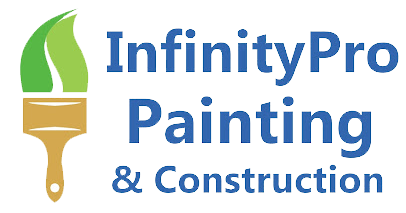Basement Remodeling can turn an unused space into a useful and stylish part of your home. However, the process can be complex, and mistakes can make the project more expensive and frustrating. Knowing what to avoid can help ensure your remodeling project goes smoothly. Here’s a guide to help you avoid common basement remodeling mistakes.
Ignoring Moisture Issues
Why It Matters Basements are often prone to moisture problems because they are below ground. Not addressing these issues can lead to mold, wood rot, and damage to your home. Moisture issues can also affect comfort and health.
Common Mistakes Starting your remodel without fixing moisture issues is a big mistake. If your basement smells damp, has mold, or shows water stains, these problems need to be fixed first. Another mistake is inadequate waterproofing, like just using waterproof paint or a sump pump, which might not be enough.
How to Avoid It Before starting, inspect your basement for moisture problems. Invest in proper waterproofing methods like sealing cracks and installing a French drain. Make sure your basement has good ventilation and consider a dehumidifier. Fix any leaks or water sources before beginning the remodel.
Poor Planning and Layout
Why It Matters Good planning is crucial for a successful remodel. A well-thought-out layout ensures the space is functional and meets your needs. Poor planning can lead to wasted space and extra costs.
Common Mistakes One mistake is not having a detailed plan before starting. This can lead to inefficient use of space and expensive changes. Another issue is not considering where to place essential features like electrical outlets, plumbing, and HVAC systems.
How to Avoid It Create a detailed floor plan with the placement of walls, doors, and furniture. Think about how you’ll use the space and plan accordingly. Consult a designer or architect if needed to ensure your layout is practical and maximizes space. Make sure utilities are correctly placed and integrated into the design.
Inadequate Lighting
Why It Matters Basements often lack natural light, so good lighting is essential to make the space bright and welcoming. Poor lighting can make the space feel gloomy and less usable.
Common Mistakes Relying only on overhead lights can create harsh shadows and uneven lighting. Not planning for multiple light sources can result in dark areas that are hard to use.
How to Avoid It Use a mix of lighting types, including ambient, task, and accent lighting. Install recessed lights, track lighting, and wall sconces for even light distribution. Consider adding windows, glass doors, or mirrors to boost natural light. Use dimmer switches to adjust lighting as needed.
Neglecting Proper Insulation
Why It Matters Good insulation is important for keeping your basement at a comfortable temperature and improving energy efficiency. Without it, you may face drafts, high energy bills, and discomfort.
Common Mistakes Using the wrong or inadequate insulation can lead to poor thermal resistance. Not insulating key areas like walls, floors, and ceilings can cause temperature fluctuations and higher energy costs.
How to Avoid It Choose suitable insulation materials for your basement, such as spray foam or fiberglass. Ensure walls, floors, and ceilings are properly insulated. Also, insulate ductwork and pipes to improve energy efficiency. Work with a professional to ensure insulation is done correctly and meets building codes.
Overlooking Building Codes and Permits
Why It Matters Building codes and permits are essential for making sure your remodel is safe and legal. Ignoring them can lead to fines, delays, and issues with future property sales.
Common Mistakes Starting the remodel without the right permits or checking local building codes is a common mistake. This can result in work that doesn’t meet safety standards or needs to be redone. Not considering structural changes without proper approvals can also be an issue.
How to Avoid It Research local building codes and permit requirements before starting. Get all necessary permits and ensure your project meets safety regulations. Consult a structural engineer or architect if you plan to make major changes. Keep records of all permits and inspections.
Choosing Low-Quality Materials
Why It Matters Using low-quality materials can affect the durability and look of your basement remodel. Cheap materials may not withstand the basement environment and could lead to additional repairs.
Common Mistakes Opting for cheaper materials to save money can result in durability problems. Not choosing materials suited for a basement environment, like those that are moisture-resistant, can lead to issues.
How to Avoid It Invest in high-quality materials that are suitable for basement conditions. Choose materials that are durable, moisture-resistant, and easy to maintain. Work with a contractor who can recommend the best materials and ensure they are installed correctly.
Conclusion
Remodeling a basement can greatly improve your home, but avoiding common mistakes is key to success. Address moisture issues, plan your layout carefully, ensure good lighting and insulation, follow building codes, choose quality materials, and get professional help when needed. By avoiding these pitfalls, you can create a functional and attractive space that adds value and comfort to your home. With careful planning and execution, your remodeled basement will be a valuable asset for years to come.



